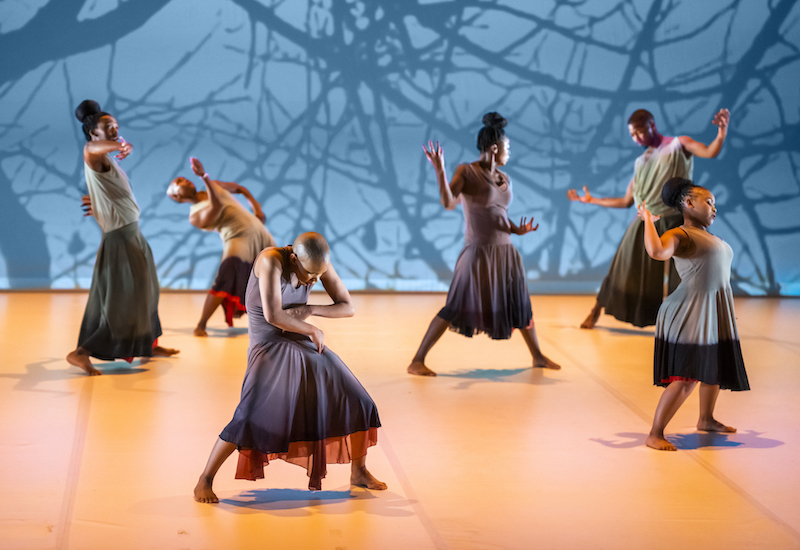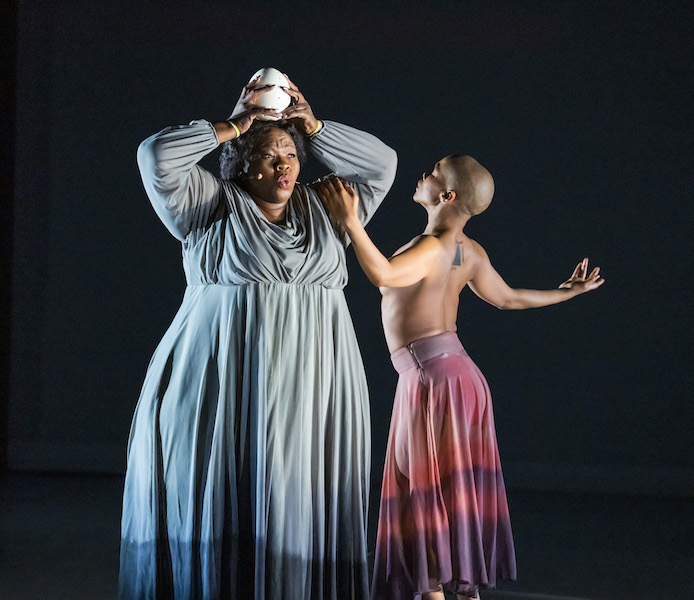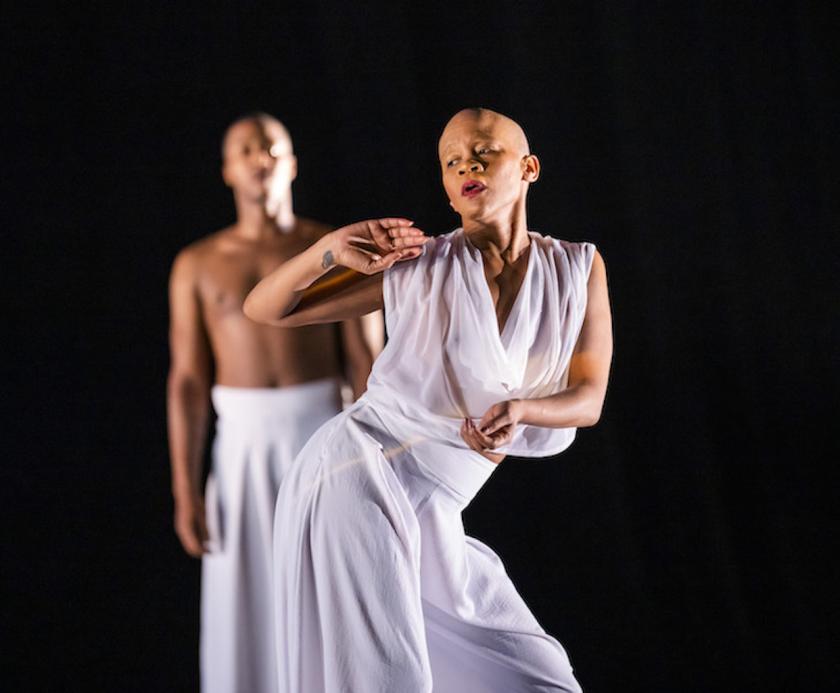The Soweto-born dancer-choreographer Dada Masilo has made her name telling classic European stories in African dialect. The last piece she toured in the UK was a striking Giselle in which the avenging Wilis were not undead brides but ancestral spirits led by a witch doctor. In his hand, instead of the traditional myrtle branch, symbol of chastity, he carried a fly whisk.
Her latest project is based on The Rite of Spring, clearly inspired by the atavistic 1970s version by Pina Bausch rather than the Russian original and its focus on the violent annual thaw. South Africa's winters being reliably pleasant and sunny, Masilo has looked elsewhere for the nub of her story, specifically to the Tswana traditions of Botswana, a country where dance plays a part in both storytelling and healing and where core beliefs place responsibility to family and tribe above the wants of the individual.
In publicity for the show, the choreographer said that she had wanted to dig deeper into the idea of sacrifice, and self-sacrifice, to flesh out what she saw as a too- slender tale in the original Rite. I’m not sure the narrative of The Sacrifice is any less slender than Stravinsky’s, or more relatable, at least to a non-African audience, but the show is nonetheless remarkable. And what it lacks in narrative clarity it gains in intrigue – it sent this writer hurrying home to find out more about the Tswana belief system and its unique dance culture.
 My guess is that Masilo had wanted the original music for her show to be a spin on Stravinsky’s, but whether for legal, practical or aesthetic reasons, it’s not – save for one distinctive scurrying passage which briefly almost quotes it. The four-piece band, on view throughout the show’s 65 minutes, includes a hard-worked violinist, a percussionist, a keyboard-cum-backing-vocalist and an opera singer, Ann Masina, whose vocal range is as vast and as roundly magnificent as she is. Appearing on stage at both ends of the show, she so dwarfs Masilo that it’s barely credible that two women (pictured below) could be so different in scale but equal in dramatic impact.
My guess is that Masilo had wanted the original music for her show to be a spin on Stravinsky’s, but whether for legal, practical or aesthetic reasons, it’s not – save for one distinctive scurrying passage which briefly almost quotes it. The four-piece band, on view throughout the show’s 65 minutes, includes a hard-worked violinist, a percussionist, a keyboard-cum-backing-vocalist and an opera singer, Ann Masina, whose vocal range is as vast and as roundly magnificent as she is. Appearing on stage at both ends of the show, she so dwarfs Masilo that it’s barely credible that two women (pictured below) could be so different in scale but equal in dramatic impact.
Small as she is, you can’t take your eyes off Masilo even when she’s dancing in unison with 10 others – she’s so precise and contained, and fast. Boy, is she fast. Tswana movement is all in the torso, shoulders, elbows and hands, which flutter like disturbed birds, or travel repeatedly from head to arms and chest and thighs and back again, over and over, as if speed-checking the scalp and skin for tics. Meanwhile legs and feet merely mark the beat, earthy and grounded. Masilo is particularly beautiful when she turns her bare back to us, revealing the subtle play of planes and angles and curves, as well as a fluorescent pink daub of body paint which I assumed to be the mark of The Chosen Maiden. She is naked to the waist from the get-go, and it seems absolutely fitting: in this case the inclusion of bare breasts as part of the dancing body is not erotic and nor is it meant to be. What’s far more startling is the dancer's drastically shaved head.
 While generally it’s right that dance should speak for itself rather than lean on written explanation, in the case of The Sacrifice a few cultural pointers wouldn’t have gone amiss. In the Tswana belief system, I only later discovered, society is made up of adults, children and badimo – ancestral spirits, including the recent dead, who continue to take an active part in the daily life of the tribe. This continuity, the idea of the potential for earthly agency post-mortem, sheds light on Masilo’s sacrifice drama and makes sense of several sequences. It would also have been useful to know that these ancestor-spirits make the sound of wind when they move about. I enjoyed the eerie whiffling pitches the percussionist was creating by twirling a length of rubber – it looked fun – but they could have had so much more significance.
While generally it’s right that dance should speak for itself rather than lean on written explanation, in the case of The Sacrifice a few cultural pointers wouldn’t have gone amiss. In the Tswana belief system, I only later discovered, society is made up of adults, children and badimo – ancestral spirits, including the recent dead, who continue to take an active part in the daily life of the tribe. This continuity, the idea of the potential for earthly agency post-mortem, sheds light on Masilo’s sacrifice drama and makes sense of several sequences. It would also have been useful to know that these ancestor-spirits make the sound of wind when they move about. I enjoyed the eerie whiffling pitches the percussionist was creating by twirling a length of rubber – it looked fun – but they could have had so much more significance.
Overall, The Sacrifice delivers an entertaining and uplifting first half-hour, then loses momentum once death draws near (as human sacrifice goes, this one takes its time). But the dancing is never less than fascinating and, at its best, the music rocks.














Add comment